Your support helps us to tell the story
From reproductive rights to climate change to Big Tech, The Independent is on the ground when the story is developing. Whether it's investigating the financials of Elon Musk's pro-Trump PAC or producing our latest documentary, 'The A Word', which shines a light on the American women fighting for reproductive rights, we know how important it is to parse out the facts from the messaging.
At such a critical moment in US history, we need reporters on the ground. Your donation allows us to keep sending journalists to speak to both sides of the story.
The Independent is trusted by Americans across the entire political spectrum. And unlike many other quality news outlets, we choose not to lock Americans out of our reporting and analysis with paywalls. We believe quality journalism should be available to everyone, paid for by those who can afford it.
Your support makes all the difference.The Scottish referendum campaign is turning desperate. And also nasty.
Accusations about public service spending in Scotland are flying around, with familiar claims of a massive “subsidy” being aired (see here).
It’s worth re-stating the facts.
These figures are all taken from the Treasury’s latest Public Expenditure Statistical Analyses tables and HMRC’s most recent income and tax tables.
Public service spending per head in Scotland is higher than in England and Wales.
But it’s lower than Northern Ireland:
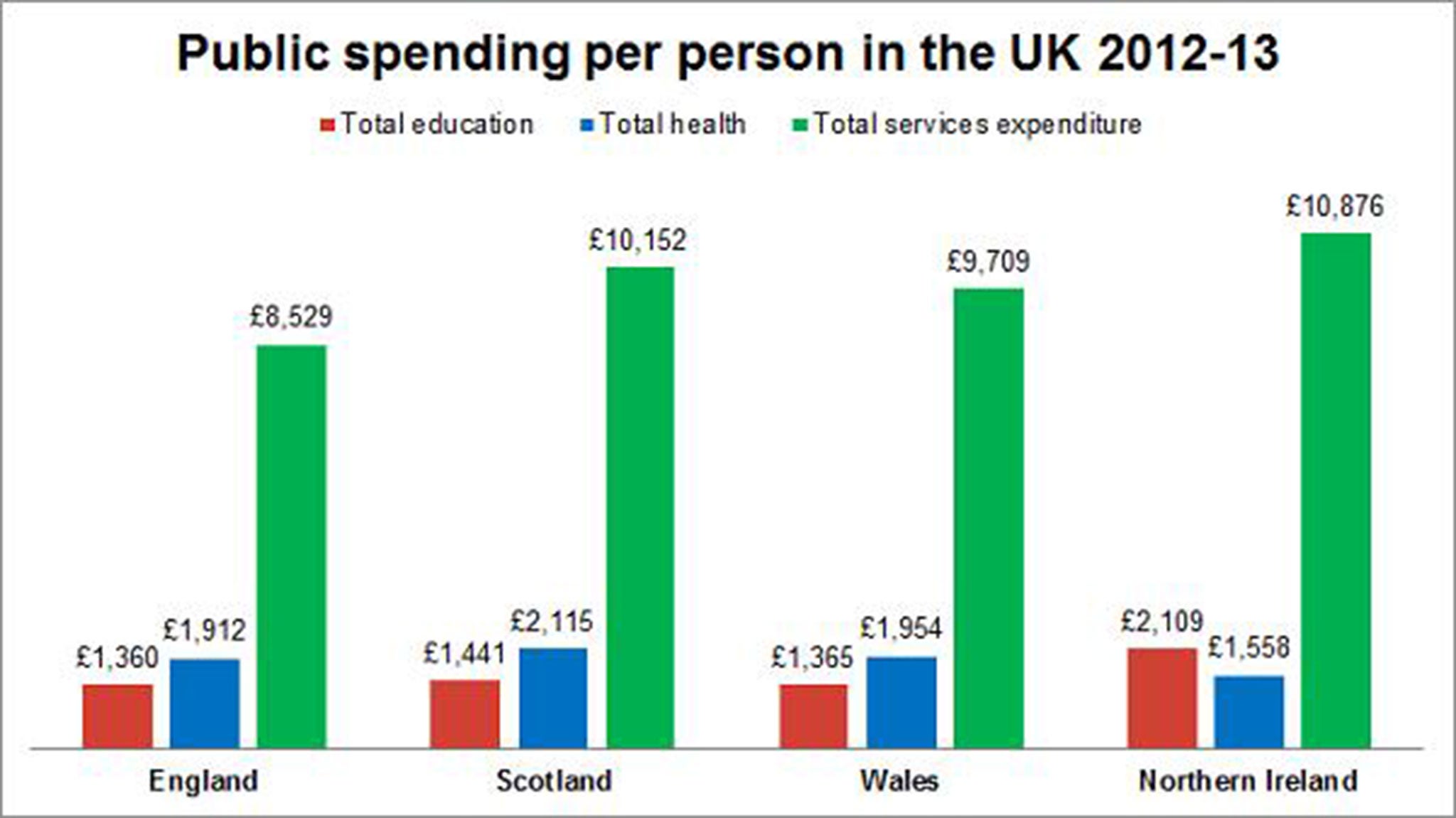
It’s also worth noting that Scotland gets less health spending per head than some English regions:
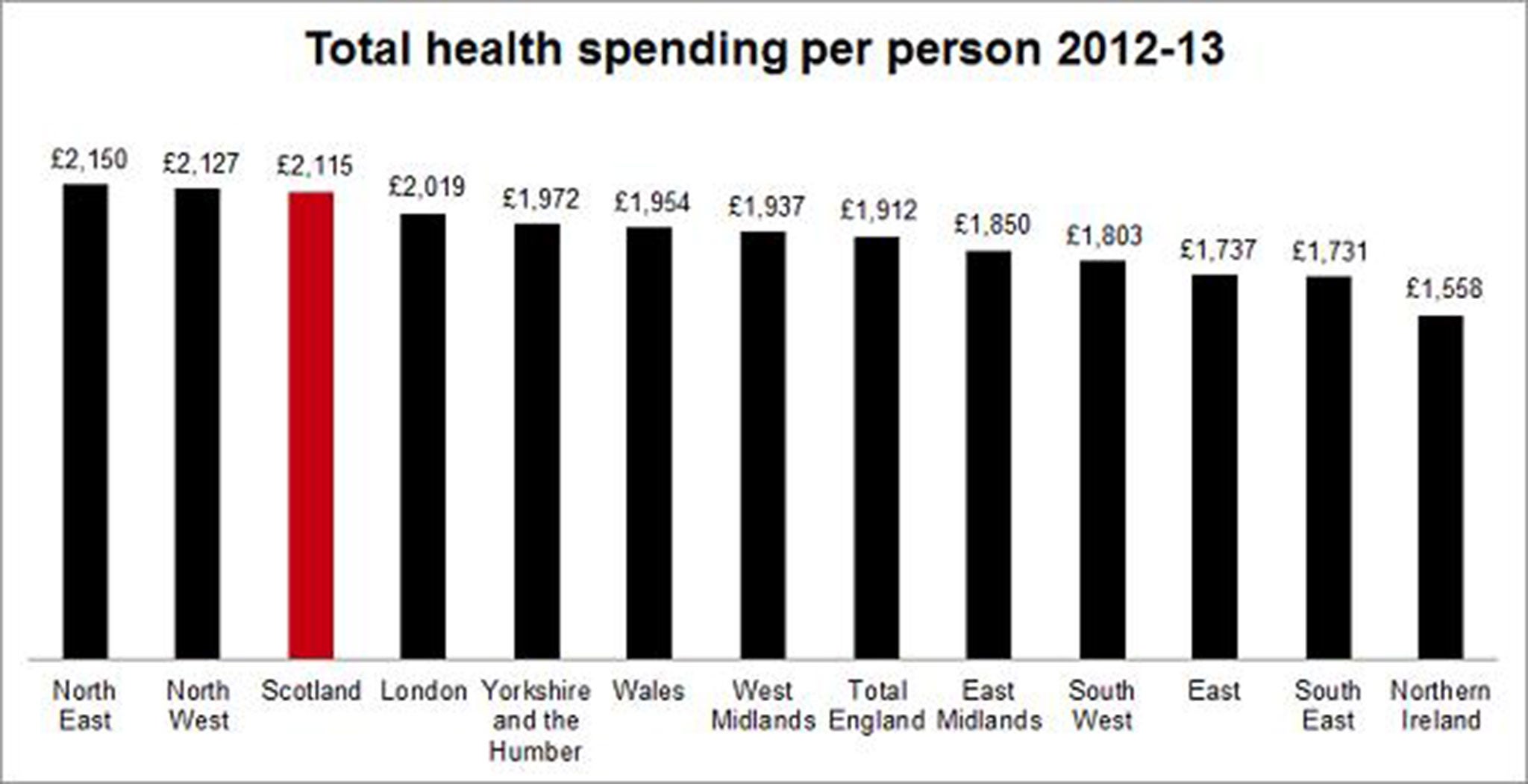
And less education spending per head than London:

And if we’re talking about subsidy we should also think about income tax as well.
Here’s the picture by UK regional breakdown:

This shows that average Scottish taxpayers pay less than English ones, but more than Northern Irish and Welsh ones.
It’s also worth putting English regions into the tax picture too.
Here’s the mean average tax breakdown:
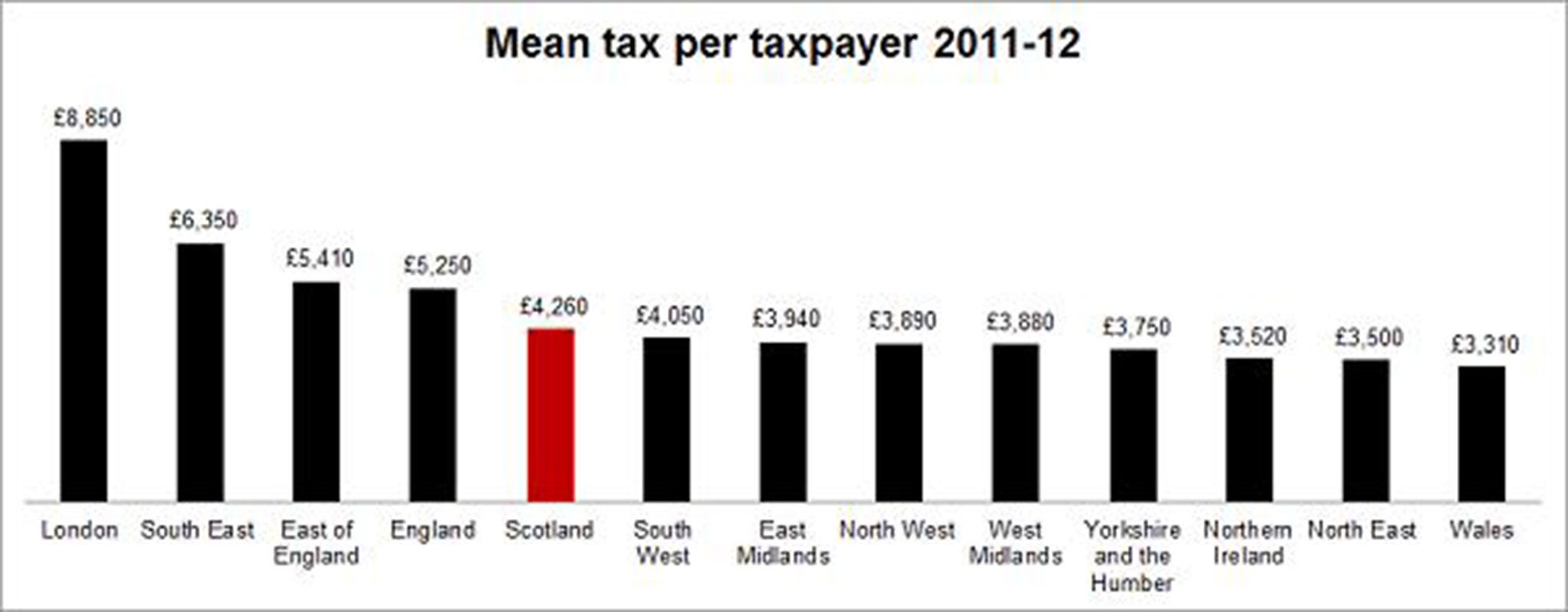
Scots contribute more than any English region outside the South East and East, reflecting the fact that their average incomes are high relative to the rest of the UK.
The mean average is skewed by a small number of high earners. But the picture from the median average breakdown, which shows taxpayers in the middle of the distribution, is similar:
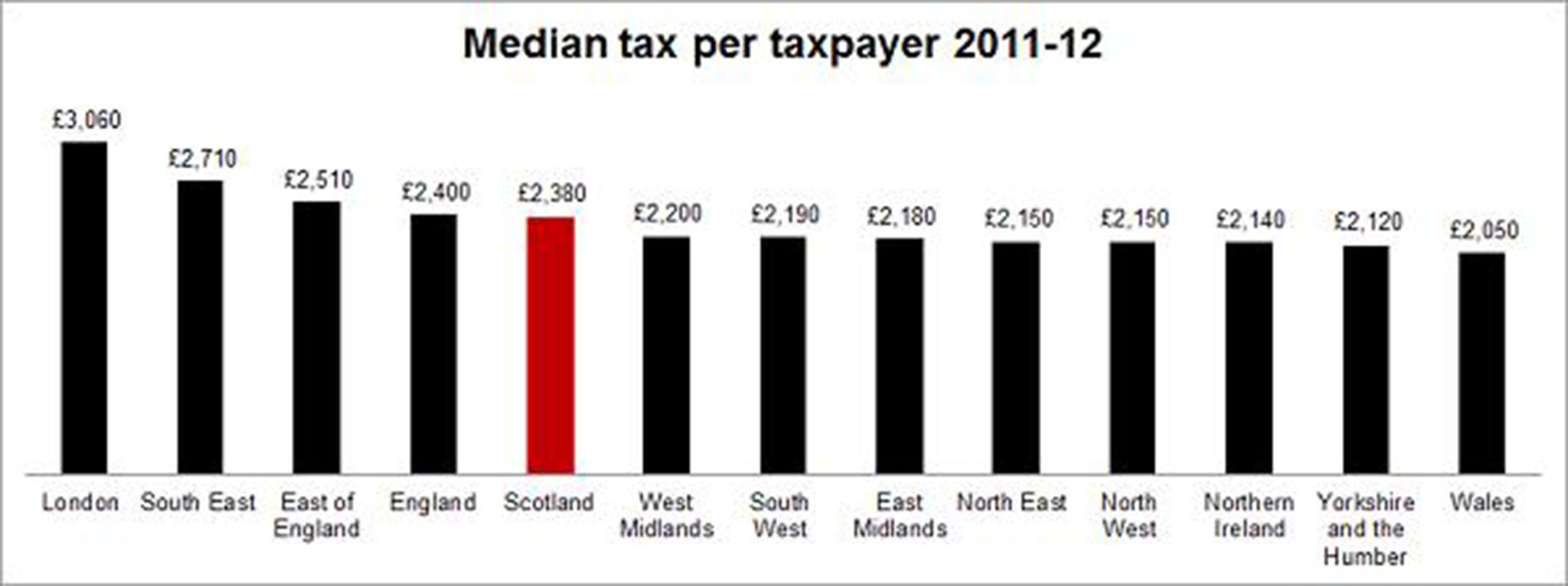
There are, of course, many other considerations – such as spending on public infrastructure and how to account for the revenues from North Sea oil pumped off Scotland’s coast. Indirect consumption taxes and business levies are not part of this picture. There is also the question of whether to adjust for regional demographic and health variation (which affect patterns of demand for health and education spending). The Institute for Fiscal Studies has a comprehensive treatment here. But for the sake of simplicity I’m focusing on these headline numbers.
Fairness is often in the eye of the beholder, but the above doesn’t look to me like a picture of Scots sucking up an outrageous public spending subsidy from the rest of the United Kingdom.
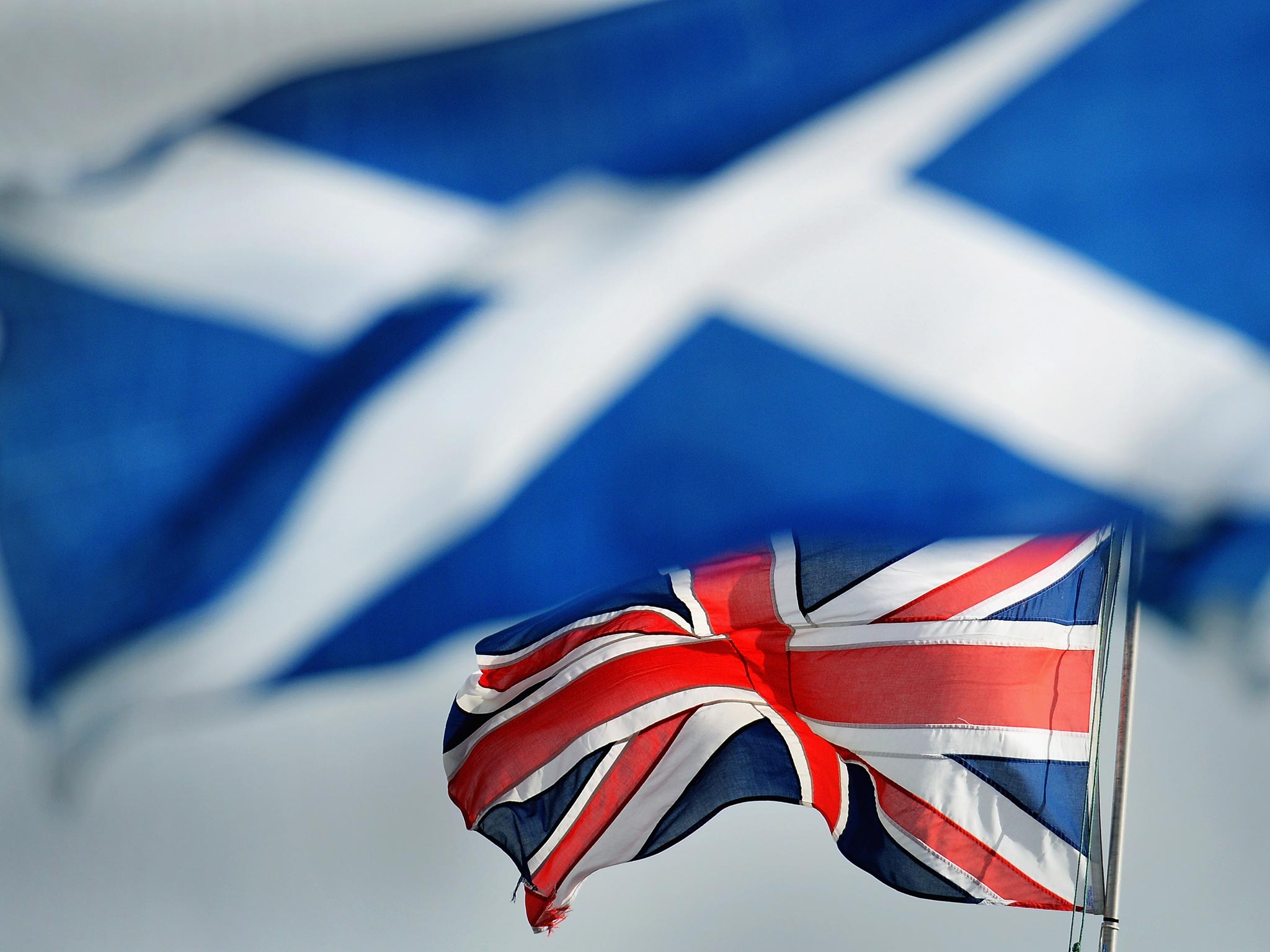
Join our commenting forum
Join thought-provoking conversations, follow other Independent readers and see their replies
Comments